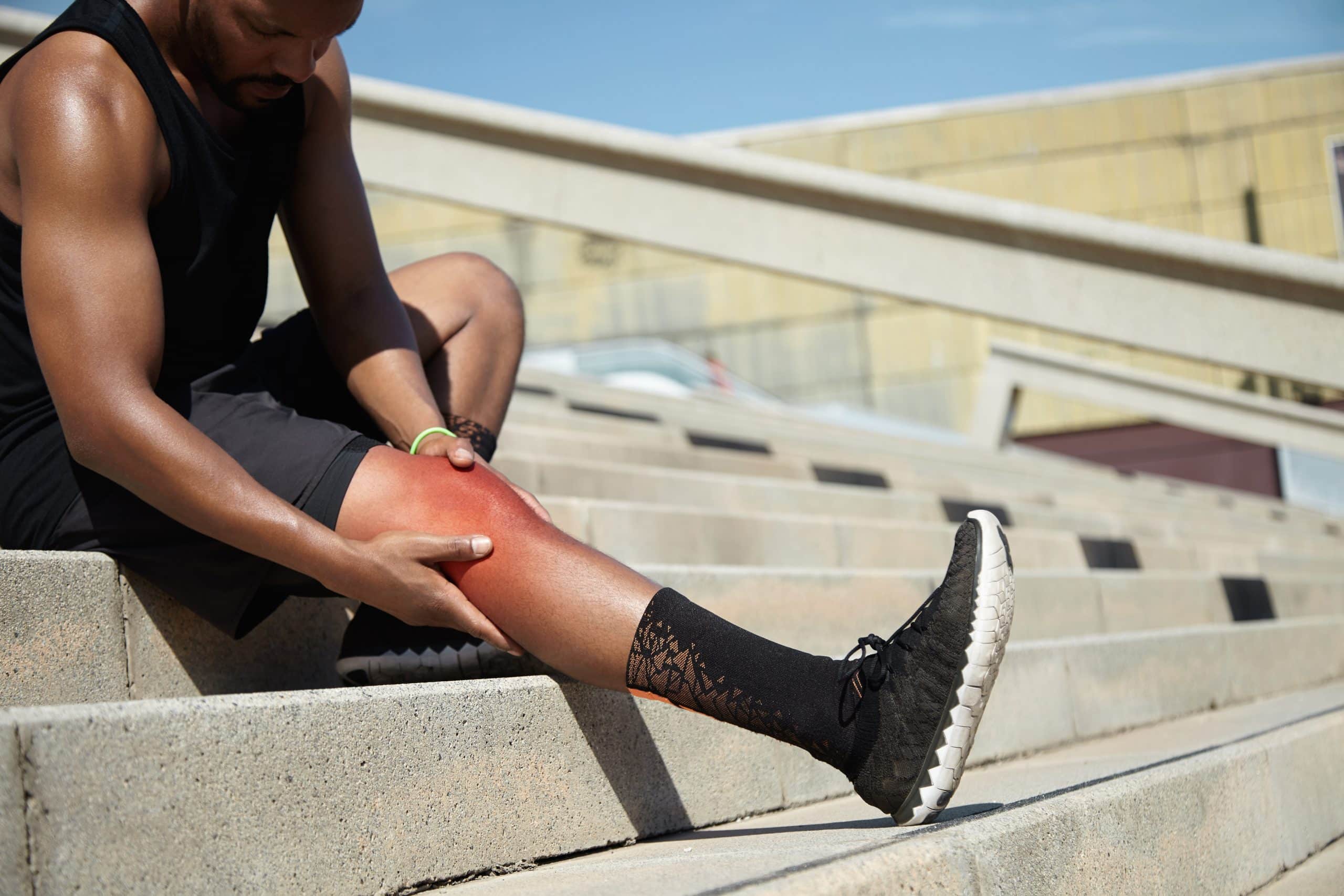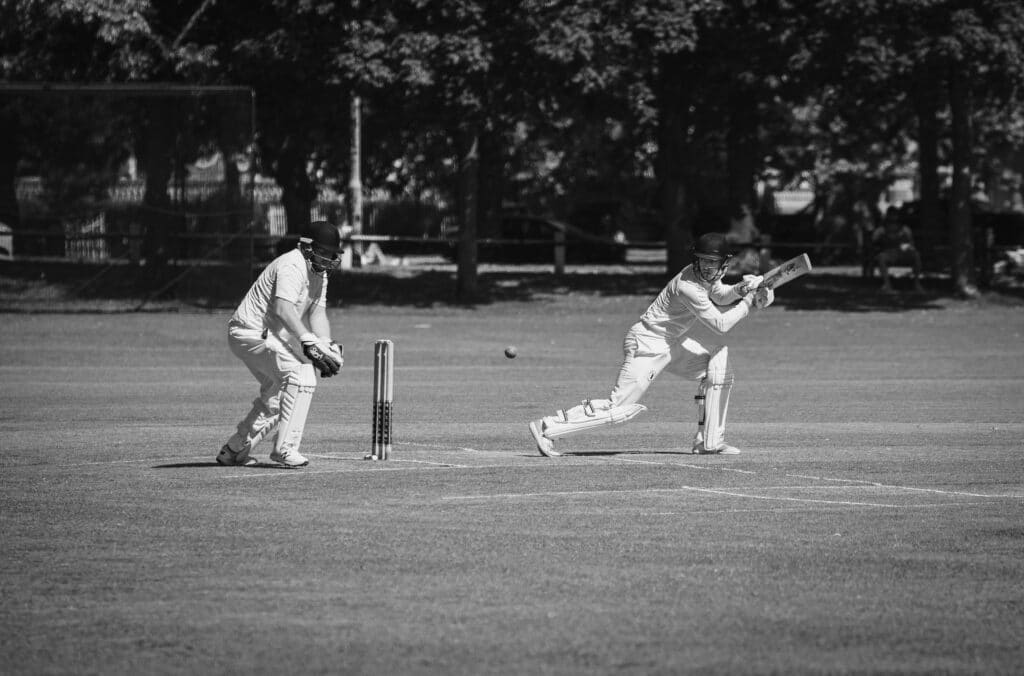Calf Muscle Strain: Causes, Treatment, and Recovery
What we’ll cover
- What Is Calf Muscle Strain and How Does It Affect You
- What Causes Calf Muscle Strain?
- Common Causes
- Activities That Increase Risk
- Risk Factors
- How to Recognise and Diagnose Calf Muscle Strain
- Common Symptoms
- Signs of Severity
- Diagnostic Methods
- What Are Effective Immediate Treatments for Calf Muscle Strain
- Comparison of Calf Muscle Strain Severity and Treatments
- How to Prevent Calf Muscle Strain
- Proper Warm-Up and Preparation
- Strengthening and Flexibility
- Best Practices for Long-Term Prevention
Calf muscle strain is one of the most common lower leg injuries, affecting athletes and active individuals across all age groups. This painful condition can sideline you from your favorite activities and significantly impact your daily mobility. Understanding the causes, recognising symptoms early, and implementing proper treatment strategies are essential for effective recovery and prevention of future injuries.
What Is Calf Muscle Strain and How Does It Affect You
A calf muscle strain occurs when the muscles in the back of your lower leg are stretched beyond their normal capacity or partially torn due to excessive force or sudden movement. The calf consists of two primary muscles: the gastrocnemius (the larger, more superficial muscle) and the soleus (the deeper muscle that lies underneath).
How calf strains develop: The calf muscles work together to point your foot downward (plantar flexion) and help propel you forward during walking, running, and jumping. When these muscles are forced to contract while being stretched, or when they’re suddenly overloaded beyond their current strength capacity, muscle fibers can tear, resulting in a strain.
Impact on daily function: A calf muscle strain can significantly affect your ability to perform routine activities. Walking becomes painful or difficult, climbing stairs may be challenging, and you might find yourself limping to compensate for the injury. The condition can range from mild discomfort that allows continued activity with modifications to severe tears that require complete rest and professional medical intervention.
Grading system for calf strains:
- Grade 1 (Mild): Minor muscle fiber damage with minimal pain and no significant loss of strength
- Grade 2 (Moderate): Partial muscle tear with noticeable pain, swelling, and some functional limitation
- Grade 3 (Severe): Complete or near-complete muscle rupture with severe pain and significant loss of function
What Causes Calf Muscle Strain?
Understanding the mechanisms behind calf muscle strain helps in both treatment and prevention. Multiple factors often combine to create the conditions that lead to injury.
Common Causes
Sudden overstretching represents the most frequent cause of calf muscle strain. This typically occurs when:
- The calf muscle is forcibly lengthened while contracting, creating excessive tension within the muscle fibers
- You step into a hole or onto an uneven surface, forcing your ankle into an extreme position
- You slip or stumble, causing your foot to flex upward while your calf muscle tries to stabilise
Explosive movements place enormous stress on calf muscles, particularly during:
- Quick acceleration from a stationary position
- Sudden changes in direction during sports activities
- Powerful jumping or lunging movements that demand rapid muscle contraction
- Sprint starts where maximum force is generated in minimal time
Overuse injuries develop gradually when calf muscles are subjected to repetitive stress without adequate recovery time. This commonly occurs in distance runners, dancers, and individuals who dramatically increase their training intensity or duration too quickly.
Activities That Increase Risk
High-risk sports and activities that commonly result in calf muscle strain include:
Running sports pose significant risk because they involve repetitive calf muscle contractions combined with potential for sudden directional changes:
- Distance running on varied terrain or hills
- Track and field events, particularly sprinting and jumping
- Cross-country running with unpredictable surface conditions
Court sports create perfect conditions for calf strains through their combination of quick starts, stops, and directional changes:
- Tennis with its explosive lateral movements and sudden stops
- Basketball involving frequent jumping and rapid position changes
- Racquetball and squash requiring quick reactions and powerful movements
Field sports present unique challenges with their combination of running, jumping, and contact:
- Football (soccer) with its kicking, sprinting, and cutting movements
- American football involving explosive starts and directional changes
- Rugby combining running with physical contact and unpredictable movements
Other high-risk activities:
- Dancing, particularly styles requiring jumps and quick footwork
- Martial arts with kicking techniques and explosive movements
- Gymnastics involving powerful takeoffs and landings
Risk Factors
Several factors increase your susceptibility to calf muscle strain:
Poor flexibility in the calf muscles creates conditions where normal movements can exceed the muscle’s available range of motion. When muscles are chronically tight, they’re more likely to tear when subjected to sudden stretching forces.
Muscle fatigue significantly increases injury risk by:
- Reducing the muscle’s ability to absorb force effectively
- Impiring coordination and muscle firing patterns
- Decreasing the muscle’s capacity to protect itself from excessive stretch
Previous calf injuries create lasting vulnerabilities through:
- Scar tissue formation that’s less flexible than normal muscle tissue
- Compensatory movement patterns that place abnormal stress on healing tissues
- Reduced muscle strength in the affected area if rehabilitation was incomplete
Additional risk factors include:
- Age-related changes in muscle elasticity and strength
- Dehydration affecting muscle function and flexibility
- Inadequate warm-up before physical activity
- Muscle imbalances between calf muscles and opposing muscle groups
- Poor conditioning relative to activity demands
How to Recognise and Diagnose Calf Muscle Strain
Early recognition and accurate diagnosis are crucial for implementing appropriate treatment and preventing complications. Understanding both the immediate symptoms and signs of severity helps determine the best course of action.
Common Symptoms
Immediate symptoms that typically occur at the moment of injury include:
- Sharp, sudden pain in the calf muscle that may feel like being “shot” or “kicked”
- Cramping sensation that persists beyond normal muscle cramps
- Immediate difficulty continuing the activity that caused the injury
- Tendency to favor the uninjured leg when walking or standing
Developing symptoms that appear within hours of injury:
- Swelling in the affected calf area, which may be subtle initially but increases over time
- Bruising that might not appear immediately but develops 24-48 hours after injury
- Stiffness in the calf muscle, particularly noticeable after periods of rest
- Difficulty with heel lifting during walking or when trying to stand on tiptoes
Signs of Severity
Indicators of a more serious injury that require immediate medical attention:
Audible “popping” sensation at the time of injury often indicates a significant tear in the muscle fibers. This sound may be heard by the injured person or even by others nearby and typically corresponds to a Grade 2 or Grade 3 strain.
Severe muscle weakness manifesting as:
- Complete inability to rise up on tiptoes on the affected side
- Significant difficulty pushing off during walking
- Marked asymmetry in calf muscle strength when compared to the uninjured side
Limited range of motion including:
- Inability to pull toes upward toward the shin (dorsiflexion)
- Pain with passive stretching of the calf muscle
- Protective muscle guarding that prevents normal movement
Visual deformity such as:
- Visible gap or depression in the muscle belly
- Abnormal muscle contour compared to the uninjured side
- Significant asymmetry in calf muscle appearance
Diagnostic Methods
Professional evaluation typically includes:
- Physical examination to assess pain, swelling, and functional limitations
- Strength testing to determine the extent of muscle damage
- Range of motion assessment to evaluate flexibility and restrictions
- Palpation to identify specific areas of tenderness or muscle defects
Imaging studies may be necessary for severe cases:
- Ultrasound to visualise muscle tears and monitor healing progress
- MRI scans for complex injuries or when surgical intervention is considered
What Are Effective Immediate Treatments for Calf Muscle Strain
Proper immediate treatment significantly influences recovery time and outcomes. The key is implementing appropriate interventions quickly while avoiding activities that could worsen the injury.
The RICER protocol provides the foundation for initial treatment:
- Rest: Immediately stop the activity and avoid movements that cause pain
- Ice: Apply cold therapy for 15-20 minutes every 2-3 hours during the first 48-72 hours
- Compression: Use elastic bandages or compression sleeves to reduce swelling
- Elevation: Raise the affected leg above heart level when possible to minimise fluid accumulation
- Referral: Seek professional evaluation for severe injuries or if symptoms don’t improve
Pain management strategies:
- Over-the-counter medications like ibuprofen can reduce pain and inflammation
- Topical anti-inflammatory treatments may provide localised relief
- Gentle massage around (not directly on) the injured area after the acute phase
Activity modification during the initial healing phase:
- Use crutches if walking causes significant pain
- Avoid activities that stress the calf muscle
- Maintain cardiovascular fitness through upper body or seated exercises
Heat therapy can be introduced after 48-72 hours to promote blood flow and healing, but should be used cautiously and never applied directly to skin.
Comparison of Calf Muscle Strain Severity and Treatments
| Severity Level | Symptoms | Treatment Approach | Typical Recovery Time |
| Mild Strain (Grade 1) | Minor discomfort, minimal swelling, some stiffness | RICER protocol, gentle stretching, gradual activity return | 1–3 weeks |
| Moderate Strain (Grade 2) | Noticeable pain, swelling, bruising, walking difficulty | Extended rest, physical therapy, progressive strengthening | 4–6 weeks |
| Severe Strain/Tear (Grade 3) | Sharp pain, significant swelling, loss of function, possible muscle deformity | Medical evaluation, possible surgery, intensive rehabilitation | 6–12 weeks or longer |
This classification system helps guide treatment decisions and set realistic expectations for recovery timelines. However, individual factors such as age, fitness level, and adherence to treatment protocols can significantly influence actual recovery times.
How to Prevent Calf Muscle Strain
Prevention strategies are far more effective and less disruptive than dealing with injury and recovery. Implementing comprehensive prevention approaches significantly reduces your risk of calf muscle strain.
Proper Warm-Up and Preparation
Dynamic warm-up routines prepare calf muscles for activity by gradually increasing blood flow and muscle temperature:
- Walking or light jogging for 5-10 minutes before more intense activity
- Calf raises performed slowly and controlled to activate the muscles
- Ankle circles to promote joint mobility and muscle activation
- High knees and butt kicks to engage the entire lower leg musculature
Progressive activity introduction helps prevent overuse injuries:
- Gradually increase training intensity by no more than 10% per week
- Allow adequate recovery time between intense training sessions
- Listen to your body and reduce activity if you notice increasing fatigue or stiffness
Strengthening and Flexibility
Calf strengthening exercises build resilience against injury:
Basic strengthening:
- Standing calf raises on both legs, progressing to single-leg variations
- Seated calf raises to target the soleus muscle specifically
- Wall push-offs to develop functional strength patterns
Advanced strengthening:
- Plyometric exercises like jump rope or box jumps (when appropriate)
- Eccentric exercises focusing on the lowering phase of calf raises
- Sport-specific movements that prepare muscles for actual activity demands
Flexibility maintenance through regular stretching:
- Static calf stretches held for 30-60 seconds after workouts
- Dynamic stretching as part of warm-up routines
- Foam rolling to address muscle tension and improve tissue quality
Best Practices for Long-Term Prevention
Equipment considerations:
- Proper footwear with adequate support and cushioning
- Gradual transition to new shoes or training surfaces
- Regular replacement of worn athletic shoes
Training management:
- Cross-training to avoid repetitive stress on calf muscles
- Adequate hydration to maintain muscle function
- Proper nutrition to support muscle health and recovery
- Sufficient sleep for optimal recovery and tissue repair
Environmental awareness:
- Surface conditions assessment before running or training
- Weather considerations that might affect muscle function
- Gradual adaptation to new training environments or altitudes
By implementing these comprehensive prevention strategies, you can significantly reduce your risk of calf muscle strain while maintaining an active lifestyle. Remember that consistency in prevention efforts is key – occasional attention to these factors is less effective than making them regular parts of your fitness routine.
Successful prevention and treatment of calf muscle strain requires understanding the injury mechanism, recognising symptoms early, implementing appropriate immediate treatment, and following through with comprehensive rehabilitation and prevention strategies. With proper care and attention, most people can return to full activity and reduce their risk of future calf muscle injuries.



